Praying Mantis Boxing (螳螂拳. Tanglangquan) is one of the most popular Chinese martial arts throughout the world. Given its long history, some observations of a praying mantis gave the basis of some principles that the founder Master Wang Lang could apply to combat, to the incorporation of the best techniques at the time and to the propagation of the art in Shandong and abroad.
Many styles, branches and sub-styles have as a result appeared in the last 200 hundred years.such as Qixing Tanglangquan (Seven Star Praying Mantis), Taiji Meihua Tanglangquan (Grand Ultimate Plum Blossom Praying Mantis), Taiji Tanglangquan (Grand Ultimate Praying Mantis) and Liuhe Tanglangquan (Six Harmonies Praying Mantis).
Legendary origins of Praying Mantis Boxing
Wang Lang (王郎), originally from Shanxi (陕西), home to Hong Quan, is credited as the founder of Praying Mantis during the Northern Song Dynasty (969-1126). It is also said that Wang Lang was known as Yu Qi (于七) – a Leader within the Tang Family Bo Village Peasant Uprising. A renowned fighter at the time, Wang Lang enhanced his skills by observation of the mantis insect and was inspired to develop skills and techniques which later became known as Praying Mantis Boxing. Wang Lang absorbed the essence of 18 key methods from the time and created what was to be known as “Shi Ba Cou” (螳螂十八凑,18 Family Collections).
After Wang Lang, it is said that there were a few different transmission lines, one being by the key disciples which latter evolved into the Plum Blossom Style and another line which passed on to legendary Shen Xiao Dao Ren (Wandering Taoist), of the 7 Star Mantis Fame. It is however likely that the styles are all later evolution and that various elements were cross developed in the various lines. As a result the histories of the three main styles shall be briefly outlined below:
In the 1700s Li Bingxiao who resided in Xiao Chishan village in Laiyang County, Shandong became the standard bearer of Praying Mantis Boxing. It is said that after failing the civil service examinations of the Qing government, he went into seclusion. His greatest pleasure then lay in meeting with passing travelers. It so happened that he had the company of many different warriors and royal guards alike. This resulted in Li Bingxiao being able to learn equally well the best of both the internal and external schools of boxing. He himself came only to practice the art of Tanglang Quan and thereby mastered the quintessence of the style. Thereafter he chose to lead the life of a nomad, not revealing his name to anyone he encountered and it was for this reason that almost no one knows of him today. Soon, Li Bingxiao became known as Li Ergou or “Two Hooks Li” and sometimes was called “Old Man with Two Hooks” (Ergou Ye) for his unique manner of applying certain Praying Mantis “hooking” techniques.
Li Zhizhan, also known as Li Sanjian, and Li Kuaishou , was born in 1821 in Pingdu, Li family village, Shandong Province. Li Zhizhan was a Biaoshi (镖师, Security Logistics Officer) who was famed throughout China, travelling and fighting as far a field as Fujian Province and Beijing. After a lengthy combat career Li took only three major disciples (Da tudimen), his nephew Li Taibao, Hao Shunchang, and most famous of all Wang Yongchun, 1854-1926 (also known as Wang Rongsheng, Wang Yunsheng).
The majority of the existing curriculum of Qixing Tanglang Quan (七星螳螂拳) was developed by Wang Yongchun. Boxing sets such as Cha Chui Quan, Xiao Huyan Quan, Hei Hu Jiao Cha Quan (Hei Hu Quan), Shuang Chui Hua and Si Lu Benda arise from this period and are largely absent from the Quan pu (boxing scrolls), of the other Tanglang sects such as Meihua/Taijimeihua Tanglang. Wang Yongchun is regarded as the source of the Shaolin (Yanqingquan, Long Fist) influence that becomes so strong in the Qixing Tanglang tradition, especially evident in the next generation of disciples. Wang taught three major disciples; Wang Yunfu, Wang Jie and most famous of all, Fan Xudong. Fan Xudong was a Yantai resident (born in Dahai) and went on to gain fame as the first Tanglang Wang (king of Mantis Boxing). A giant, weighing in at around 130kg, he is one of the most influential figures in the Qixing tradition.
The founder of Six Harmonies Mantis Boxing, was Master Wei Delin (~1780-1873), who was native of the Wei Family village in the west of Laiyang county, Shandong Province. Sometimes also referred to as Duck Palms Wei San, due to his hands that had deformity from birth. It is said that Master Wei studied from two famous boxing Masters Jin and Long from Cangzhou, the Liuhe boxing (Liuhequan) style. He had a natural ability for the martial arts and picked up the skills quickly. years later he returned to Laiyang county and had an encounter with Master Li of the Tanglang (Mantis Boxing) Style, after an exchange the two could not find a weakness in each others techniques, as a result they became close friends. The exchanges thereafter through their ongoing friendship resulted in the development of the Liuhe Boxing Mantis Hands Style (Liuhe Quan Tanglang Shou).
Tongbei Tanglang Quan, also referred to as Jiuzi Tanglang Quan,and Luohan Duanda Tanglangquan (or even Shaolin Tanglang Quan) honors Wang Lang as the founder, and is said to have originated from a Daoist in the Baiyun Guan (White Cloud Monastery) Yan Wanxiu. Yang Junpu from Da Baitou village, in the east of Cangzhou (Cang County) received instructions in this boxing method. When Yang Junpu established the Fushun Logistics Security Bureau it led to many of the officers being trained in these martial arts including his son Yang Jinyuan, as well as Yang Deqing, Yang Defu, Yang Deyu, Dai Yintian, Dai Xintian and Sun Zhipu.
Dissemination of Tanglang Quan
Tang Lang Quan (Praying Mantis Boxing) is quite an old style with its founding father acknowledged as Wang Lang. There are many different views as to Wang Lang’s period of existence, with the oldest being in the Northern Song Dynasty (969-1126), followed by a record suggesting the Ming Dynasty (1368-1644), and yet another suggesting the Qing Dynasty (1644-1911). Since this early period is difficult to ascertain with any accuracy, we will outline the main characters and lineages that are known instead of legendary periods. Prior to the Qing dynasty, it is unknown whether styles of Tang Lang Quan were distinguished by different lines, nor if the title Tang Lang (Praying Mantis) was even applied. Irrespectively like most arts and cultural practices, the style has evolved and thus useful to distinguish.
Often the folkloric founder of Tanglang Quan is known as “Wang Lang”. However there is limited direct heritage and is more of an inspiration.
Tajii Plum Blossom Mantis Boxing – Taiji Meihua Tanglang Quan
1. Li Bingxiao (李炳霄, est. 1731-1813) whilst travelling with his father had saved a man’s life and later became his martial arts teacher of mantis boxing. Li became known as “two hooks Li” through his mantis skills. After failing the imperial exams he became disinterested in public life and lived as a recluse.
2. Zhao Zhu (赵珠, est. 1764-1847) was known as one of the best disciples of Li Bingxiao having trained daily for a number of years.
3. Liang Xuexiang (梁学香, 1810-1895 ) also known as Liang Shupu was born in the nearby Yushan Kuang Village, situated on the border between Haiyang and Laiyang Counties of Shandong Province. As a young man Liang became Grandmaster Zhao Zhu’s disciple and quickly mastered the art of Tanglang Quan. Liang Xuexiang was a man of fairly average stature but remarkably agile. His striking power was also extraordinary. He once killed a challenger with one punch thus people called him the “Iron Fist Liang” (Liang Tiechui). Nevertheless his physical strength was below the ordinary he could not even lift a heavy basket of grain thus was frequently criticized by his father for the inability to be productive during the daily agricultural labor.
After completing his training, Liang Xuexiang spent working as a Biaoshi (Security Officer) in a Biaoju (security logistics escort bureau) in the northern central plains. However, after a dangerous conflict in Cangzhou (were many top martial artists reside) he left. The incident happened when they were escorting solver to Tianjin, along the way in Cangzhou they stayed in an Inn only to be attacked by groups of thieves. It was a bloody fight and Liang was injured becoming blind in his right eye becoming nicknamed as “one eyed Liang”.
Thereafter, he also travelled around China seeking out other famous boxing masters. Until ultimately returning to his hometown in Haiyang, taught Mantis boxing and developed some written records. He passed Mantis Boxing to Liang Jingchuan, Jiang Hualong, Song Zide, Hao Hong (Lianru), Xiu Shankun, Sun Ying, Zhu Yongxiu, Jiang Laoqi, Tong Kunjiang, Sun Yuanchang and Sun Yuancai.
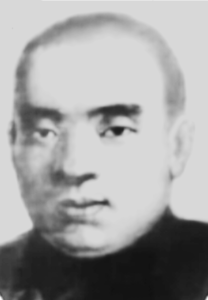
4. Hao Lianru (郝莲茹,1865-1914) also known as Hao Hong, was from Miaohou village in Mouping County, Shandong Province. In his youth he inherited the family martial arts of Luohanmen, Yuejia Sanshou, and Shengyuanmen since he was a child. After mastering the martial arts, he first worked as a bodyguard and then did business. When he was young, he traveled all over the country with his father as a Logistics Security officer (The Bureau was located on Taiping Temple Sreet in the old city of Jinan) Hao Lianru was generous by nature and loved to make friends with martial artists, so he had many friends in the world. In the risky life of escorting, he would always exchange kung fu with some martial artists and learn martial arts from them. Around 1885, when Hao Lianru was in his early 20s, he was praised as “God of Spear, Hao” for his excellent spear skills during a martial arts competition in Beijing.
In 1885, Hao Lianru became Liang Xuexiang’s disciple. The following year, he invited him to his home to become a private disciple and learn the authentic “Plum Blossom Mantis Fist”. Later, he became sworn brothers with Liang Jingchuan and Jiang Hualong. According to some records, “some of Liang Xuexiang’s disciples in his later years were taught by Liang Jingchuan on behalf of his father”. When Liang Xuexiang went to Beijing to teach his martial arts, Hao Lianru, Liang Jingchuan and others followed the master to Beijing and stayed by his side, assisting him while continuing to study with him. In 1903, he wrote the book “精神, Essence”, which was bound in nine volumes. He systematically developed the theoretical foundation of Haojia Mantis School and made it reach a perfect and high level. It had a profound impact on the development of boxing theory of other praying mantis schools.
In the 1860’s Yantai was opened as a trading port and many foreign companies established trade progressively leading to a prosperous business environment. Hao Lianru saw business opportunities with a keen eye, saved money during his security escort bureau business, and invested in opening eight shops. Hao Lianru managed and coordinated business affairs, while his wife managed accounts. In 1914, due to economic disputes, Someone sued Hao Lianru to the county government office, and then he was arrested and imprisoned in the Mouping County Government Office. Because the plaintiff had established a relationship and bribed the government, no matter how Hao Lianru stated, the county magistrate ruled in favor of the plaintiff. Hao Lianru was so angry that he held his breath and damaged his internal organs, and committed suicide in the lobby.
The Hao family suffered a heavy blow due to the death of Hao Lianru. Many boxing techniques and essences were not taught, leaving an immeasurable loss. Fortunately, Hao Lianru’s wife was from a martial arts family in Cangzhou, Hebei, and she retained many martial arts, and continued to pass them on to her six sons. In order to make a living, the following year Hao Henglu took over his father’s mantle and his fourth brother Hengxin, and moved the Hao family boxing school to Yantai City, No. 6 Niu Rou Hutong, Rulin Street, behind Changfaxiang Leather Shop. This was the earliest boxing school in Yantai to teach Mantis Boxing. In 1923, it moved to Rongtai Street behind Yantai Fulu Shou Theater. From then on, the brothers of the Hao family went out to teach Mantis Boxing. Only the third brother, Hao Hengchang, stayed in Miaohou Village to guard the family business and continued to teach martial arts at home.
4. Jiang Hualong (姜化龙, 1855-1924), also known as Jiang Yunsheng, was born to a poor family during the fifth year of the Xianfeng reign (1851-1862) in Huangjin Gou Village, Laiyang County, Shandong Province. He initially studied Digong Quan (ground boxing) and later studied under Liang Xuexiang.
During those times, there was a Luohan Boxing and Long Fist practitioner, Li Danbai (李丹伯) whom was a well known fighter that was expelled for his notorious attacks on other schools during his training. Given his reputation Li Danbai sought out Jiang Hualong and they had fight, they were very evenly matched but eventually Jiang Hualong was able to overcome Li’s spinning (fan che) fists. After that they become martial brothers and exchanged techniques. Jiang’s son Jiang Dongyang to learn the Fan Che methods.
It was during this time that the Zhaoyao (Essentials) sets of Mantis boxing were developed. Jiang’s boxing became known as Meihua (Plum Blossom) Mantis Boxing.
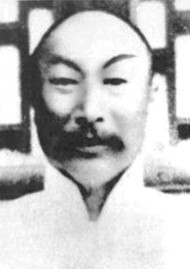
5. Song Zide (1855-1934) had the name Yaokun. He was born to a wealthy family in Zhaoge Zhuang Village, Laiyang County, Shandong Province. He was also called Song Erye – Song “The Second Elder”. Being from a wealthy family he had time to dedicate and research the skills of Mantis boxing.
Song Zide further developed theory and practice of traditional Tanglang Quan. Such as devleoping “Plum Blossom Road” (Meihua Lu) which was later adopted by the other styles of Tanglang Quan. Grandmaster Song Zide also created the sevenths section of the set called “Essentials” (Zhaiyao) as a combination of Tanglang Quan and “Ground Boxing” (Digong Quan) that Jiang Hualong practiced. The teachings of Song Zide became known as Taiji Mantis Boxing (the interplay between Yin and Yang). Sometimes Jiang Hualong and Song Zide’s methods are known as Taiji Meihua Mantis Boxing.
Song taught hundreds of students, the most famous disciples of this lineage known as the “Eight Great Disciples” (Ba Da Dizi) – Wang Yushan, Cui Shoushan, Li Kunshan, Jiang Huanting,, Zhao Shiting, Jiu Zhuyuan, Zang Yunsheng and Jiang Yulong.
Jiang Hualong and Song Zide are the most important figures in the development of Tanglang Quan at the turn of 20th century.
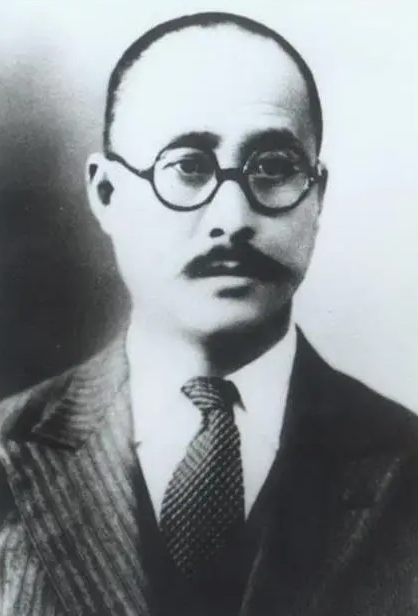
6. Cui Shoushan (1890-1969), also known as Pengnian, was a native of Dongzhulu Village, Laiyang, Yantai City, and a master of Mantis Boxing. Mr. Cui was born into a prominent family and a family of scholars. Influenced by such a family, Cui Shoushan has been reading poetry and books since he was a child. He is smart and clever, so he is deeply loved by the elders in the family. However, Cui Shoushan has always admired his uncle Song Zide since he was a child.
Cui Shoushan was the nephew of Mr. Song Zide, one of the richest men in Laiyang and a master of Mantis Boxing. He was extremely smart, practiced hard and was inquisitive. With his unique blood relationship, he received the true inheritance of Taiji Mantis Boxing from Mr. Song Zide and became the first of Mr. Song Zide’s eight disciples. He often followed Mr. Song Zide to go out and make friends with martial arts, and also received guidance from famous teachers of other schools.
After following Mr. Song Zide for several years, Mr. Song saw that his martial arts were becoming more and more profound, so he gave him his beloved sword, on which Mr. Song Zide’s name was engraved, meaning the first successor of Taiji Mantis School. Mr. Song said to his beloved disciple: “Your martial arts have reached the highest level. You are a rare disciple in my life. It is a blessing for Mantis Boxing to have successors. I hope you will carry forward Mantis Boxing in the future and live up to my expectations”. In the following three years, Cui Shoushan followed Mr. Song’s instructions and traveled around to seek teachers and friends, learn from the strengths of many schools, and constantly enrich and improve Mantis Boxing. He devoted his life to the research and development of Mantis Boxing, combining the strengths of various boxing schools. Whether in theory or practice, he enriched and developed Mantis Boxing, and also made boxing reach a state of perfection, especially in actual combat, forming his own unique style and techniques.
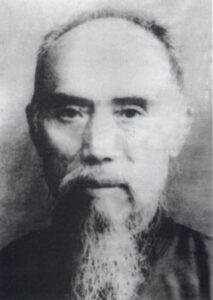
5. Hao Henglu (郝恒禄, 1887-1948) was the most famous of Hao Lianru’s sons. It is said that he had extraordinary fighting skills and a thorough understanding of the theory and principles of Praying Mantis Boxing. Hao Henglu is credited with the creation of the Damo Shuangba Jian (double handed sword). Hao Henglu had also studied other boxing methods and developed family’s Tang Lang Quan further. He taught in Many parts of China including Yantai, Qingdao, Penglai, Shanghai, Beijing and Harbin (where he stayed with one of his first disciples, Cao Dekun). He passed away whilst in Shanghai.
Some of his key students include his son Hao Bin, Lu Chongzhou, Lu Chongren, He Shiguang, Wan Dan, Ding Xiangting, Song Haoli, Cao Dekun, Zhou Yongfu, Zhou Yongxiang, He Shiguang, Ge Dean, Zhu Desen, Wang Mingyu, Lai Zhangchun, Jiang Wanyi, Jiang Gengfang, Liu Qirong, Cao Jifu, Lu Congzhou, Xu Dingzheng and Chen Yuntao.
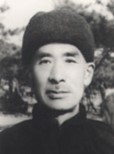
6. Hao Bin (郝宾,1906-1984) originally from Mouping County, Shandong Province. He was able to study with Hao Hong and Hao Henglu becoming his his father’s prodigy and recognized as the most outstanding of Hao Henglu’s students. He received much acclaim for his martial prowess, winning a competition when he was 18 years old. He later advanced his studies under the tutelage of M. Ji Chunting (student of Jiang Hualong and Song Zide) in Dalian. In this way, it is thought that he had obtained a very thorough understanding of Tang Lang Quan. Later in life, he was instrumental in spreading the art in the Shandong and Dongbei regions. He taught throughout Mouping, Yantai, Qingdao and Dongbei.
He taught many including Hao Weizhi (his son), Sun Delong, Sun Deyao, Wang Jusheng, Sun Xuebo, Qu Zijun, Chen Xuekun, Sun Baoen, Wei Wengao, Ge Xixin, Jiang Daoquan, Wang Xinkuan, Wang Longtian, Wang Huzhi, Jiao Hongzhu, Wei Fengchi, Liang Zhuozhong, Hao Mingli, Shi Xiuren, Wang Xuemin, Yang Changling, Zhang Wenbin, Li Jie, Sun Xiuong, Xu Jinrong, Gao Kelin, Liu Mingjing, Zhong Chunde and Yu Yongshun.
6. Ji Zhongde studied with Master Hao Hengxin and Huang Yongkai ( disciple of Liang Jingchuan, Liang Xuexiang’s son). Students included Lin Jizhou, Wang Songting, Zhang Zhengxiang,
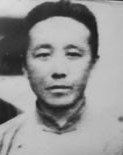
6. Cao Dekun (曹德坤, 1895-1959) originally from Mou Ping County in Shandong Province, became a disciple of Master Hao Henglu when he was just 8 years old and in 1915 at just 20 years of age travelled to Harbin and taught Taiji Meihua Tanglangquan. In 1920, in Harbin he opened the “Dekun Martial Arts Institute”. Throughout his 40 years of teaching he had many students across Harbin and was instrumental in propagating the art in North China. His school also hosted Hao Bin many times, exchanging skills.
Some of his most well known disciples included Zhang Bingxi, Zhang Songling, Liu Changgong, Qi Zhigang, Dong Zigang, Liu Zhanbang, Qi Lide, Gu Yunzhao, Zhang Yansong, Feng Zhaoming, Guan Tongyun, Liu Jianting, Liu Yanzhi, Wang Fengtan, Wang Ganyi and Sun Zhenxiao.
7. Zhong Chunde studied Shaolin Boxing and Hard Qigong (Ying Qigong) with his father from a young age. For many years he endured the harsh training and obtained a high level of skill. His later encounter with Tang Lang Quan Master Hao Bin was to introduce him into a world of subtle technical mastery. All the hard practices of his youth were easily overcome by the intricate technqiues of Tang Lang Quan executed by his Master Hao Bin. Zhong Chunde became one of the last disciples.
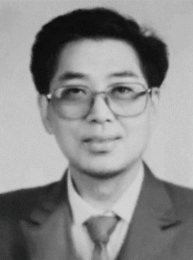
7. Hao Weizhi (郝维志 1934-1994) was the son of Hao Bin, fourth-generation inheritor of Hao Family Mantis Boxing, and eldest grandson of the Hao family. Influenced by his family since childhood, he began to practice with his grandfather Hao Henglu, at the age of six. In 1947, he continued training with his father Hao Bin for nearly 10 years. At the age of 14, he participated in the Shandong Championship and won gold. He fully and completely inherited the mantle of Hao Family Mantis Boxing. Hao Weizhi graduated from Shandong Jian School in 1955 and was assigned to work in the Chaoyang City Urban and Rural Construction Committee. He was one of the founders of Chaoyang Wushu Association of Liaoning Province and was elected as the first vice chairman of Chaoyang Wushu Association. He served for many years and established the Tai Chi Plum Blossom Mantis Boxing Research Association during this period.
In 1990, Hao Weizhi unfortunately suffered from a serious illness, but he fought the disease with a strong will. In 1991, Yantai City established the International Mantis Boxing Association. In 1992, Yantai, Shandong Province held the Hao Family Tai Chi Plum Blossom Mantis Boxing Friendship Meeting and Traditional Martial Arts Championship, which was attended by 15 countries and regions at home and abroad. He did a lot of meticulous and meaningful work to enhance people’s understanding of Hao family Tai Chi Plum Blossom Mantis boxing. He loves martial arts more than his own life. However, due to long-term work and sleepless nights, he became ill and died in September 1994 due to ineffective medical treatment.
7. Liu Changgong (刘长功) was born in 1926, in Long Kou City, Shandong Province and later moved to Harbin. When he was 16 years of age he became a disciple of Master Cao Dekun and studied for over 10 years. Later he also received instruction by Master Hao Bin.
He taught many students in Harbin and has been very influential in popularizing the art. Students include his sons Liu Jiguo, Liu Jjia, Liu Jizhong, Liu Jixin and Liu Jiliang, as well disciples Li Guanghou, Zhang Wei, Fu Jingrui, Li Zhigang, Wang Zhishen, Wang Yutian, Meng Fajun, Yang Desen, Zheng Tie, Cao Fu hai, Wang Zhiliang, Zhao Weian, Zhou Yeqing, Yu Kaiwei and Song Chunjiang.
Six Harmonies Mantis Boxing – Liuhe Tanglang Quan
1. Wei Delin (魏德林,1780-1873), was native of the Wei Family village in the west of Laiyang county, ShandongProvince. Sometimes also referred to as Duck Palms Wei San, due to his hands that had deformity from birth. It is said that Master Wei studied from two famous boxing Masters Jin and Long from Cangzhou. He had a natural ability for the martial arts and picked up the skills quickly. years later he returned to Laiyang county and had an encounter with Master Li of the Tanglang (Mantis Boxing) Style, after an exchange the two could not find a weakness in each others techniques, as a result they became close friends. The exchanges thereafter through their ongoing friendship resulted in the development of the Liuhe Boxing Mantis Hands Style (Liuhe Quan Tanglang Shou).
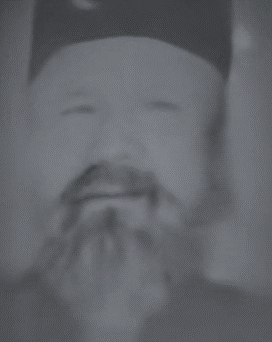
2. Lin Shichun (林世春,1826-1912), was from Chuanlin Village Zhaoyuan County, Shandong Province. He studied Luohan Quan as passed down by his family, he became quite capable. He became a key disciple of Wei Delin and studied for over ten years.
Throughout that time, even though the Liuhe techniques were better he could let go of his families Luohanquan. So he combined the principles and essence of Tanglangquan with Luohanquan creating the Liuhe Duanchui (Six Harmonies Short Strikes) or also known as Luohan Duan Da (Luohan Short Strikes) as practiced within the system today. The Duan Chui set became one of the most important of the 10 Liuhe Tanglangquan sets and was known as “would not exchange it for gold” as to how important it became. After an encounter with Wei Delin and being intrigued by how his techniques were easily countered by the awkward movements that flowed like gentle streams of water, Lin Shichun studied Liu He Tanglang Quan.
Lin Shichun was from a farmer’s family and had never set foot in the big cities. The rich Ding family in Huang County hired professional assistants and tutors, so Lin took up the chance for many years. His return to home in Zhaoyuan county when he was 70 years old. Lin had three main disciples Ding Zicheng and Wang Jichen (from Huang Country) and Zhao Tongshu (Zhaoyuan County).
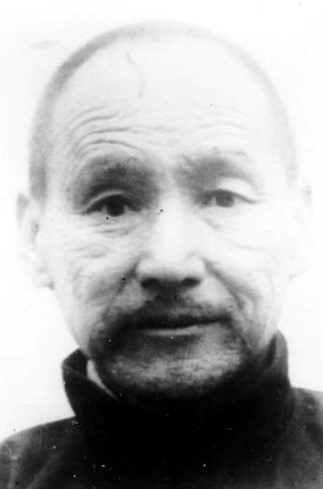
3. Zhao Tongshu (赵同书,1869-1939), was from Guandong village, Zaoyuan County, Shandong Province. He firstly studied Long Fist (Erlang/Mizongquan) and later he encountered Lin Shichun at an Inn becoming his disciple, studying Liuhe Tanglangquan for over 15 years. He was the last main disciple of Lin Shichun and followed him learning the Liuhe Tanglangquan for over ten years. During the time of his studies his family land was being sold off and the family suffering from poverty, those were harsh conditions. Zhao studied with much more objective and he mastered the art with combat as the principle focus.
Lin Shichun really loved Zhao’s dedication and the three treasures of San Chui (three strikes), Tie Ce (Iron Threadings) and Dan Dao (Single Saber) lived within Zhao. After Lin’s passing, Zhao became a master on his own right and was known for his skills but also for his good ethics. He pursued a living by running a restaurant and teaching martial arts.
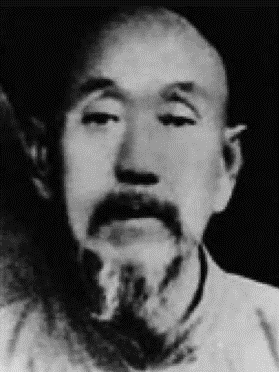
3. Ding Zicheng (丁子成, 1880-1956), was from Huang County, Shandong (today known as Long Kou). He commenced martial studies in his family style, Santungquan and then in Luohanquan, where he also became adept at Ying Gong and Iron Palm. His family owned businesses throughout Huang County and Shandong province, often hiring martial experts as bodyguards or security. His father hired Lin Shichun and so deeply impressed by his skills both Ding Zicheng and his younger brother Ding Huanqing became disciples of M. Lin. With his prior skills, Ding excelled tremendously and became highly skilled. It is also said that he exchanged with Cao Zuohou (disciple of Meihua Tanglang M. Jiang Hualong).
Unfortunately, an earthquake later hit Huang County which impacted may buildings including Ding’s home. He was buried under the house but miraculously survived, however, his hearing was damaged and became totally deaf over the course of time. Hi students included Ding Jiemei, Gao Shouzhang, Ting Wenqing, Zhao Shulin, Shan Xiangling, Chen Yuntao, Yuan Junzhi, Zha Qianyi, Zhang Xiangsan and Liu Yunqiao.
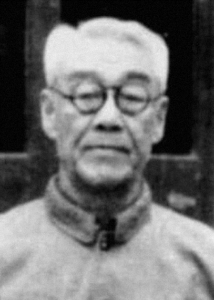
4. Chen Yuntao (陈云涛, 1906-1984), was from Huang County, Shandong (today known as Long Kou). He liked martial arts since young and studied under Ding Zicheng (Liuhe Mantis Boxing) and later with Hao Henglu (Meihua Mantis Boxing). As a member of the Workers union in 1925 , he later moved to Dalian, Liaoning in 1927 where became a sports coach. It was during that time he commenced teaching Liuhe Mantis Boxing. During those years he also exchanged with other masters. During the Sino-japanese war he returned home and joined various resistance movements which led to a political life.
In 1945 he became county minister for Xinjin county and soon after the Deputy Chief of Dalian City. Given his busy life for the teaching of Liuhe Mantis he brought his training brother Dan Pixun (1905-1985, better known as Dan Xiangling 单香陵) up to Dalian to conduct classes.
Seven Star Mantis Boxing – Qixing Tanglang Quan
1. Li Sanjian (李三剪, 1810-1891), also known as Li Zhizhan, and Li Kuaishou , was born in 1821 in Pingdu, Li family village, Shandong Province. Li Zhizhan was a Biaoshi (Security Logistics Officer) who was famed throughout China, travelling and fighting as far a field as Fujian Province and Beijing. During that time much of the China plains were in disarray by rebellious groups and the government had little control over the lawlessness in Zhili (Hebei) and Shandong, as a result guarding valuables across the country was no easy task. It is unclear of where he learnt Mantis Boxing, although legends proclaim that a wandering Daoist (Sheng Xiao Dao Ren) from Lao Mountain had taught him. After a lengthy combat career Li took only few major disciples, his nephew Li Taibao, Hao Shunchang, Wang Yongchun and Wang Yunpeng.
In 1888, Li Sanjian had visited his friend Li Yichun in Yantai. At that time he took on two disciples, Hao Shunchang (who went on to become the founder of Yuanyyang Tanglang Quan (鸳鸯螳螂拳 Mandarin Duck Kicks Mantis Boxing) and Wang Rongsheng (who went on to become the founder of Qixing Tanglang Quan (七星螳螂拳 7 Star Mantis Boxing). It was said that Hao Shunchang excelled in sets such as Dan Chahua, Shuang Chahua, Shibasuo, Guatui and Cuogang. Whilst Wang Rongsheng learnt sets such as Zhaiyao, Bazhou, Kuaishou and Tanglang Shou. Li Sanjian is said to have taught them for only 3 years. The two friends Hao and Wang mutually exchanged and thereafter Master Wang Rongsheng created the Seven Star Mantis System. Later Master Li Sanjian, he returned to his village, where his last disciple was young Wang Rupeng.
2. Wang Rongsheng (王榮生, 1855-1927) (also known as Wang Yongchun, Wang Yunsheng, 王云生 ) commenced training in his youth of many local boxing styles such as Huaquan under Master Li Yichun, also some Ditangquan. He started teaching when he was 23 years from his home at the time. In 1888 became a disciple under Master Li Sanjian. Wang’s home and where he taught became known as Kui De Tang, Where Kui (魁) represents the chief star of seven stars of the big dipper. Wang then systematically built the theories and concepts around this such as the Seven Star Step, the Seven parts ohe bod (head, soulders, elbows, hands, hip, knees and feet) and more. Seven Stars Praying Mantis was thus born, with the majority of the existing curriculum of Qixing Tanglang Quan developed by Wang Rongsheng, who was also close friends with fellow martial artists such as Li Rongde, Yang Jintang, Jiang Hualong, Li Danbai and Su Mingyuan (Yanqingquan/Mizongquan). Although Wang as customary respected his teachers/ancestors instead but the actual founder of Seven Star Mantis Boxing was Wang Rongsheng. Wang taught major disciples; Wang Yunfu, Chi Shuluo, Wang Jie and Fan Xudong.
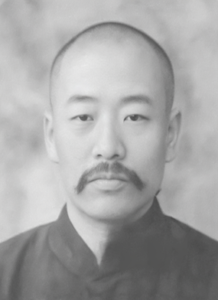
3. Fan Xudong (范旭東, 1875-1935), was born in Dahaiyang village, Yantai, Shandong Province. A large frame master both tall and heavy (at over 120kg), originally from a fairly wealthy background as a silk merchant, he became one of the most famous of Wang Rongsheng’s disciples. He was well known for his skills including a trip in 1875 to Siberia where he defeated all challengers. He was said to have killed two bulls in a self defense situation whilst crossing a field. Known for his Iron palm skills, his mantis was so renowned that he gained nicknames such as “Tanglang Wang” (Mantis King) and Fan the Giant. He contributed to the style and wrote 5 volumes titled “Shaolin Zhen Chuan” (Shaolin True Transmission) which included a volume on Herbal medicine, one on Luohan Gong and the others on the principles and methods of Mantis Boxing. He ran a school which was predominantly taught by his disciple Yang Weixin, and his other most renowned disciples included Guo Jialu, Luo Guangyu, Xiao Shubin, Wang Chuanyi and Lin Jingshan.
3. Wang Rupeng ( 王汝鹏, 1875-1959) (also known as Wang Yunfu and Wang Shaofei) from Pingdu, Shandong Province, studied with Wang Rongsheng (in another record it suggests Li Sanjian but given the content and structure of his materials it is likely Wang Rongsheng with influence from Lin Jingshan). In 1892 he studied Baguazhang under Ma Gui. In 1911 he went to Tianjin where he met with Lin Jingshan and the two exchanged skills. Some of his students include Wang Qingzhai, Wang Xiuhua, Liu Yufang, Sun Wenbo and Tian Bingzhang.
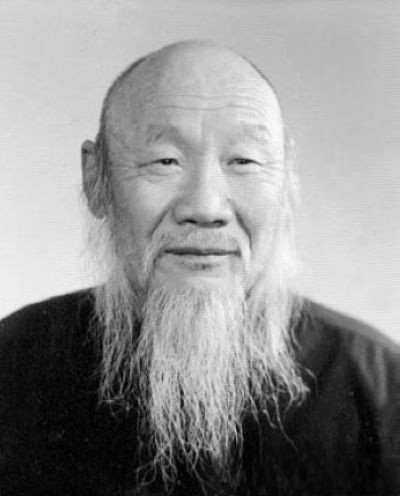
4. Wang Qingzhai ( 王庆斋, 1906-1993) was born in Jinzhou, Anqiu County, Shandong Province but grew up in Dalian, Liaoning province. He was fond of martial arts from a young age and studied Digong (Ground boxing) with M Zhang Gongcheng, Chang Quan with Sun Chengyun, Praying Mantis Boxing with Anqiu, Shandong Master Wang Rupeng, and also Shaolin methods, Yang Style Qingping Sword and Luo Family Duan Men Spear with Cangzhou M Sun Wenbo (Tongbei Tanglang Quan, Luohan Duan Da).
In 1938, he moved to Shenyang and opened a school there. He became a key figure in the Praying Mantis Boxing of Shenyang and taught many students such as Ma Shugui, Lian Jinshan, Liu Shijun, Liu Deli, Li Deyu, Chen Changxi, Kong Xianglong, Wang Shuping, Fu Youxiang, Ge Zhanku, Hu Chunming, Huo Ruiting, Wang Tianrun, Guo Xuekun, Tian Yushi, Meng Fuling, Gai Shujie, Wu Junqing and Huang Zhaolin.
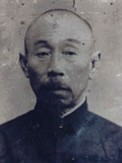
4. Lin Jingshan (林景山. 1885-1971), was born in Jiangtuan village, Laiyang county, Shandong Province. Fond of martial arts since his youth, at the age of only 14 he travelled to Yantai to seek employment and worked odd jobs including as an assistant in vegetable and grain stores, and general laborer. Being poor he could not afford tuition and thus he would observe Master Fan’s school which was located nearby to his work on Nanda street. He would study the movements and then practice in his spare time. One day he was seen by Master Fan Xudong, who asked him to demonstrate what he knew. Impressed by his skills, he then was accepted as a disciple and commenced training in 1902. Since he was smaller and agile, his focus was on light and speedy footwork and fast techniques.
He started teaching in Tianjin when he became an military instructor in 1911-1915. Although Yang Weixin was originally head of teaching, there was an episode when Yang Weixin killed two Meihua Mantis students in fight (Yang was known for short temper and fierce Mantis Boxing), and was jailed for a year. Fan Xudong managed to bail him out after only a year and sent him to Shanghai. After that Lin Jingshan became responsible for teaching in Master Fan’s School.
In 1929, Lin Jingshan started teaching in Yantai and later founded the Jingshan Martial Arts Society, which he ran until 1966. In 1968, during the cultural revolution he returned to his home village in Jiangtuan, and passed away there on the 01 June 1971. He taught many students throughout his life and was responsible for much of the seven star mantis boxing’s popularity in Shandong province. Some of his key students included – Hu Yongfu, Shao Huating, Wang Chunshan, Lin Chunsheng, Mou Chuanzu, Ling Huatang, Lin Chunfa, Lin Shangwei, Yu Hai, Yu Tiancheng, Yu Zhenhai, Zhong Lianbao and Yu Tianlu.
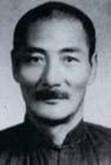
4. Wang Chuanyi (王传义,1900-1969) – – was born in Fushan, Shandong Province. Grandson of Wang Rongsheng, studied with his father Wang Shilu. However his father passed away at the young age of 36. His uncle then sent him (age 8) to Yantai to study with Li Zongde (李宗德) learning Tantui, Silu Bengda, Taizuquan and other such Changquan/Mizongquan methods. He obtained a good foundation and had studied for over three years with Li. When he returned to Fushan, he studied under his grandfather’s disciple, Fan Xudong and later also with Lin Jingshan. In 1923, he went to Shanghai and was a Coach at the Jingwu Association for eight years. Whilst in Shanghai, together with Yang Weixin and Fan Xudong, they analysed his grandfathers manuscripts and developed more completely the Seven Star Praying Mantis System.
Both since the manuscripts were passed by his grandfather and as he was literate (Yang and Fan were not so educated and only had parts of the records), Wang Chuanyi played a pivotal role in the development of Seven star Mantis Boxing and also to identify the elements from Yanqingquan/Mizongquan and those from Li Sanjian. After the 1932 Shanghai incident (short war with Japan), both Wang Chuanyi and Luo Guangyu headed to the south. Wang Chuanyi did not like the weather in Singapore and returned home to continue teaching. In 1952, he settled in Dalian, Liaoning Province and taught there until he passed away. Wang’s Mantis boxing had a lot of content as it included the full material of his grandfather’s teachings but also further elements of the Changquan/Yanqingquan and further developed sets/weapons. Wang taught his son Wang Yanqing, and had many students such as Du Xing, Li Lianfang, Wang Changyan, Chi Xueyuan, Li Wanzhi, Jia Peijun, Liu Daqiang, Liu Dawei, Gao Yanqing, Sun Baozun, Sun Renshan, Zhang Wanshun, Wang Maosheng, Liu Shushan, Ma Guangyou, Zhao Hongren and others.
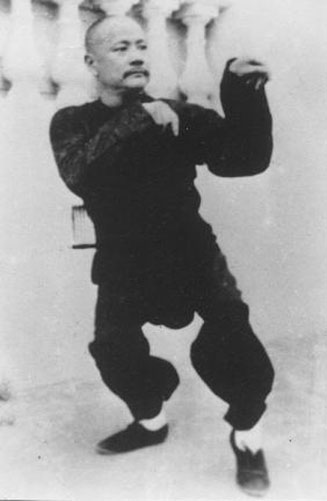
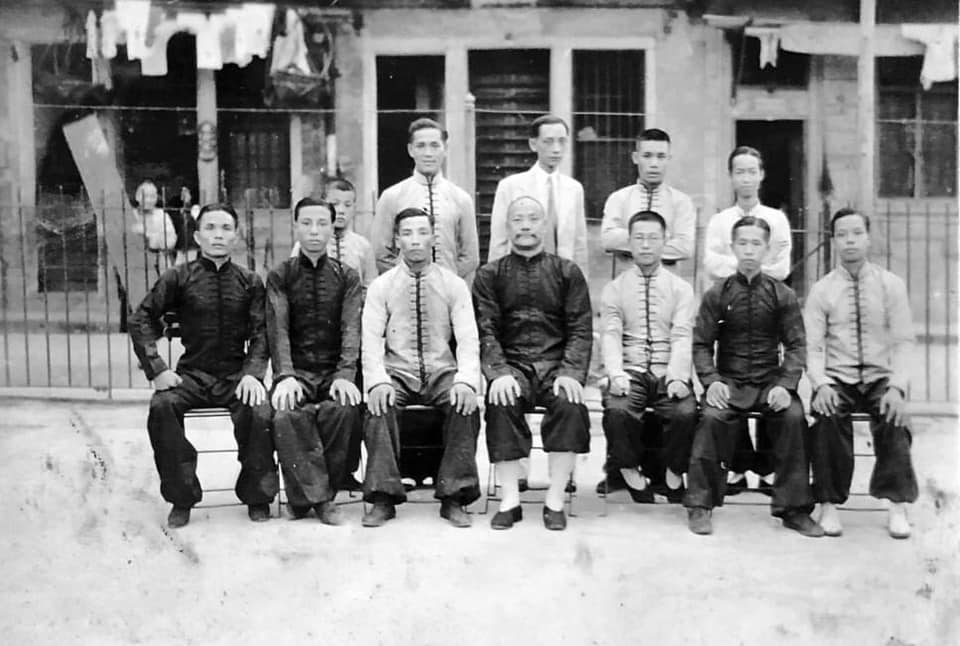
4. Luo Guangyu ( 羅光玉, 1888-1944) was born in Yantai, from a poor family, he made a living as a shoemaker throughout Yantai and Penglai. In 1906, he became a disciple of Master Fan Xudong and studied Mantis Boxing for over 7 years.
He was sent to Shanghai by Master Fan in 1913. There, he commenced teaching at the Shanghai Jingwu (Chin Woo) Athletic Association. As a result of the influence of the Jingwu association and fellow teachers/practitioners, Luo’s Mantis had developed many differentiated features and his legs had problem (remnants of tuberculosis), some of the stances were conducted more uprightly.
Master Luo’s contributions and teachings through the Jingwu associations, made seven star Mantis Boxing available to the masses and his many disciples/students have reached far across the globe. Some of his notable disciples in Shandong included Cui Kuisan, Fan Yongchen, Ma Chengxin, Yu Lejiang, Wang Shengchong, Pan Hongchang. Those in South China included Huang Hanxun, Zhu Zhixiang, Wu Hanchen, Guo Zuchao, Li Weiyi and many others.
Tongbei Mantis Boxing – Tongbei Tanglang Quan
Cangzhou’s Tanglang quan honors Wang Lang as the founder, and is said to have originated from a Daoist in Baiyun Guan Yan Wanxiu. The Yang family from Da Baitou Village in the East of Cangzhou received instructions in this boxing method. The Fushun Logistics Security Bureau was established by Yang Junpu resulting in many being trained in these martial arts including his son Yang Jinyuan as well as Yang Deqing, Yang Defu, Yang Deyu, Dai Yintian, Dai Xintian and Sun Zhipu. hen with influences of local Tongbei quan (in Cangzhou it is different to the commonly known Tongbeiquan) and Tanglang quan, it became known as various names including Shaolin Tanglangquan etc.
Yang Junpu’s disciple Sun Zhipu had a son, Sun Wenbo whom had studied the boxing method as well as the Qingping sword with Yang Yunqiao (Yang Enlin’s student) and the Luo family spear. These were known as the three skills of the Sun Mantis Boxing and taught to many across Cangzhou, Tianjin, Dalian and Shenyang. The well known Mantis practitioner Wang Qingzhai who taught in Dalian then later Shenyang had studied Seven star mantis with Wang Yunpeng and then with Sun Wenbo. Tianjin Zhang Baoshan and Dalian Wang Xiuhua had also learnt from M Sun Wenbo.
Further to Wang, there Yang family members that continued this line of mantis such as Yang Junpu’s son Yang Jinyuan as well as Yang Dejing, Yang Defu, Yang Deyu etc. Yang Defu opened a branch in Fengtian (Shenyang today) of the Fushun Security Bureau and taught members there. The remaining Yang family members taught in Cang county until the 8th generation today and others spreading the style including He Hongpo, Yang Zhengqi, Wang Jinrong, Sun Zhihe and Da Zhijun.
The remaining Yang family members taught in Cang county until the 8th generation today and others spreading the style including He Hongpo, Yang Zhengqi, Wang Jinrong, Sun Zhihe and Da Zhijun.
The practice of Cangzhou Tongbei Mantis consists of a number of smaller sets (e.g. Five Tigers Boxing) and the main practice, known as Luohan Duanda or Jiuzi Tanglangquan, is due to 9 characters in the style represented by the two sets (7 former and 9 latter sequences, in Cangzhou, it is common to have two roads of sets, qianhou). The 9 characters being Beng, Lou, tie, kun, kou, gou, gua, zhe and Lu. (The 7 former lines focuses on the first five characters and the latter on the remaining ones).
Taiping Tanglang Quan
Taiping Tanglang Quan is predominantly from the Dalian region of China (and also Harbin which is from Cao Dekuan (Hao Henglu’s disciple) who brought the style there). In the early 1900’s Dalian experienced a phase of martial arts developments as many masters from Hebei and Shandong established schools and taught there. Tang Lang Quan style was especially prominent, and over 4 decades of so many different Mantis Boxing experts taught in Dalian. Some of the key masters in those times included Xiao Shubin, Jiang Hualong, Li Zizhan, Liu Duosan, Hao Bin, Sun Zhongmin, Fan Xudong, Yang Weixin, Chen Yuntao, Cui Shoushan, Ji Chunting, Sun Wenbo, Shi Fengpo and Wang Chuanyi. This also resulted in the training across different styles of Tanglang Quan inclusive of Qixing, Hao family Taiji Meihua, Liuhe, Ziwu, Luohan Duanda and Taiji Tanglang Quan branches.
Jiben Gong (基本功, Basic Skills)
The practice of Praying mantis includes Xinggong (Movement Practise), which is basically the physical development of coordination, flexibility and strength. So the practice of the Coordination of the Shoulder, Waist, Hips, Legs and the ability to maintain lively actions is a preliminary point. This is followed by active basics including the fists, palms, hooks, kicks, stances and body methods and also Zhuangbugong (Standing Exercises).
Once the coordination of one’s on body is achieved, the introduction of combination methods and dual partner practice commences. This includes Yuhuanbu (Changing Steps), Qishou (7 Hands), Sanchui (3 Strikes), Shuaidiefa (Throwing and Falling Methods), Qinnafa (Grappling Methods), Dianxuefa (Point Striking methods), Fenshen Ba Duankaoda Fa (8 Close range striking methods), shadow boxing and practical sparring or combat.
To understand the process of developing the above skills we also need to outline some of the supporting internal and external cultivation methods in Praying Mantis that are available to achieve them. These include the Sanhuijiuzhuanluohangong (3 Returns 9 Rotations Luohan Skill), Taiyi Zhenren Baduanjin (True Taiyi 8 Brocade), Xiuxifa (Resting Methods), Chunyang Tongzigong (Youth Skill), Bada Jingang Qigong (8 Great Diamond Qigong), Tie Luohan Gong (Iron Luohan Skill), Paida Gong (Body Hitting Skill), Kaoti Gong (Body Close in Skill), Tie Sha Zhang (Iron Palm), Tiebigong (Iron Arm), TidaShabao (Striking and Kicking Sandbags) and others.
Fundamentals of the System
The Praying Mantis Curriculum of the Taiping Institute is a process of development that incorporates the cornerstone aspects of the Qixing (7 Star), Meihua (Plum Blossom) and Liu (6 Harmonies) boxing methods. The depth of the Praying Mantis Styles precludes the fact that there are many forms and sets of practice of empty hand, combat and weapons. The curriculum (not necessarily in order) consists of the following aspects:
Fundamentals – Single and Linked Techniques
These are individual techniques and combination thereof which are practice as basics. most of them are derived from existing sets but are practiced in isolation ensuring the essence of Praying Mantis. Some are practiced as basic or fundamental, whilst others are more advanced in nature. These include basics such as Zhanzhuang (Stances) which trains the key stances of Praying Mantis Boxing. Followed by the training in basic techniques such as Gouzijiao (Hooking Legs), Sanchui (3 Strikes) and more as outlined below (note only a few mentioned as examples, others are selected from time to time). Many of the methods have variations, as an example, Sanchui has Shang Sanchui, Xia Sanchui, Xunbu Sanchui, Aobu Sanchui and so on. As well as ability to combine with a partner.
| San Chui (3 Strikes) Wu Chui (5 Strikes) Feng Shou (Sealing Hands) Gou Shou (Hooking Hands) Quan Chui (Circular Strikes) Gouzi Jiao (Hooking Kicks) | Da Zhan Pai (Wings Patting) Deng Ta Bu (Pressing kick Steps) Feng Feng Dian Tou (Pheonix Pecking) Lianhuan Wu Chui (Continuous 5 Strikes) Heihu Touxin (Black TIger Steals Heart) Gouloucai Shou (Hook, pass and pluck hands) | Mo Pan Shou (Rubbing over hands) Gua Pi (hanging Axe) Tou Shou (Stealing hands) Suo Hou hands (Locking Hands) Quan Jiao (Circular Legs) Qishou Chui (7 Hands) |
Boxing Sequences(螳螂套路)
There are number of routines/set practices within Praying Mantis Boxing. Each introducing different principles and techniques.
| Bengbu (蹦步 Crushing Step) Chachui (插捶 Piercing Strikes) Cuogang (挫刚 Avoiding Hardness) Shibasuo (十八锁 18 Locks) Rouling (柔灵 Soft and Lightly) | Fanche (翻车 Turning Wheel) Heihu Chui (黑虎捶 Black Tiger Strikes) Luohan Chui (罗汉捶 Luohan Strikes) Yuejia Chui (岳家捶 Yue Family Strikes) Taiji Pi Chui (太极劈捶 Grand Ultimate Axe Strikes) | Zhi Lu Chui (指路捶 Point the way Strikes) Luohan Duanda (罗汉短打 Short Strikes) Meihua Lu (梅花路 Plum blossom Road) Tanglangshou (螳螂手 Mantis Hand) Chuan Zhi (穿枝 Through the branches) |
Sanshou Duilian (散手对练, Combat Sets)
Praying Mantis boxing also contains a large array of drills and technique exercises that develop combat efficiency. Many of the Fundamental can be converted into two man set practices to allow one opponent as the attacker and the other as the interceptor. Additionally there are some specific combat sets both empty hands, weapons and combination thereof, some of the key empty hand ones are noted below:
- Tao Hua San (桃花散 Scattered Peach Flower)
- Kao Da (靠打 Close In Strikes)
- Po An (破按 Investigative method)
- Mopan Shou (磨盘手 Rubbing Dishes Hands)
Shiba Cou (螳螂十八凑,18 Collections)
These are conisdered the older original Praying Mantis Boxing routines dating back to the times of the legendary Wang Lang. Luanjie, consisting of 36 hands/methods and include concepts such as Gang-Rou (Hard-Soft), Yin Yang, Xu Shi (Empty-Full), these are the 6 characters, “then by the six lines of the trigrams (6 x 6) 36 is derived. Following in commune with the Yijing (Classic of Changes), Luanjie commences with Taiji which is the outcome of Yin Yang originated from Liang Yi (Two Polars)”. Bazhou, is sometimes divided into sections (commonly 4), with 64 techniques/hands within,” these following from Luanjie are relating to Liangyi creates Sixiang which gives rise to Bagua (8 Trigrams), the keys of Bazhou are Yinyang, Gangrou, Jintui, Xushi (8 Characters), so 8×8 equals 64 methods”. The Bazhou refer to the skill in using the 8 sections of the body (head, shoulders, elbows, knees and hip), the emphasis is on body methods and delivery of short power.
- Bazhou (八肘 8 Elbows)
- Luan Jie (乱接 Chaotically Connected)
Zhai Yao (螳螂摘要, Essentials )
There are 6 Sections of Zhaiyao which are said to have been developed on the basis of Mishou (Secret Hands) also known as other names, thought to be the combat orientated techniques. There are around 365 hands/techniques in the Zhaiyao. “In line with the Yijing again, derived are the 360 days to a cycle. It is said heaven has 4 seasons, man has 4 limbs, fists have 4 shapes. Heaven has 8 sections, man has 8 sections etc….also delivering heaven has 365 days, Man has 365 parts, Fists have 365 hands. Heaven has 3 treasures (Moon, Sun, Stars) and Man has 3 treasures (Qi, Blood, Essence) and so forth.
- Liu Duan Zhaiyao (摘要 6 sections of Essentials)
Baiyuan Quan (螳螂拳白猿捶, White Ape Boxing Series)
The Baiyuan (White Ape) series were taught in Yantai (the first two, Tou Tao and Chu Dong) which spread among different Styles of Praying Mantis Boxing, with the full series being completed by the time they were practiced in Dalian. Whilst in some instances there is mention of a ‘Sheng Yuan Men’ (Ape Sage System), it is more likely the work of Wang Yunsheng who developed the sets progressively on the basis of a story where the protagonist Bai Yuan goes through a series of adventures obtain a longevity peach for his ill mother during the Warring states period. These series provide many combinations and practical combat methods in their practice.
| Baiyuan Tou Tao (白猿偷桃 White Ape Steals a Peach) Baiyuan Chu Dong (白猿出洞 White Ape Exits Cave) Baiyuan Xian Shu (白猿献书 White Ape offers book) | Baiyuan Rudong (白猿入洞 White Ape enters Cave) Baiyuan Xian Tao (白猿献果 White Ape Offers Fruit) Baiyuan Xiao Mu (白猿孝母 White Ape Filial to Mother)* |
and sling on branches (there is also Xianren Zhilu, immortal points the road)
Liuhe Shou (螳螂六合手, Six Coordinations Hands)
As the essence of Liuhe Shou – these sets have a distinct power generating approach which is more gentle (less choppy or abrupt) than previous. Movements flow and power is released in waves with a whole body emphasis. To achieve this the Liuhe, or six coordinates (internal and external) must be emphasized.
| Jie Shou Quan (截手圈 Connecting Circle Hands) Tie Ci Shou (铁刺 Iron Threading Hands) Liao Yin Zhang (撩阴掌 Lifting Yin Palms) Shan Shou Ben (闪手奔 Rushing Lightning Hands) | Jing Li Cang Hua (镜里藏花 Concealing Flower in the Mirror) Zhao Mian Deng (照面灯 Facing the Light) Shuang Feng (双封 Double Sealing) Duan Chui (短捶 Short Strikes) |
The Weapons of Tang Lang Quan
Like many Chinese martial arts, Praying Mantis Boxing also includes the practice of weapons. Originally, the number of weapons practiced are few with the Spear and sword most prominent. Some lineages of Seven Star Praying Mantis have a large array of weapons but this is mainly due to their association with the Jingwu associations of Shanghai and Hong Kong rather than pre-existent in the Shandong Praying Mantis Schools. Others have picked up certain sets from other styles. There are now many and some of the more traditional Tanglang Quan Sets/methods include:
| Jian Zi (剑字 Key Sword Strokes) Damo Jian (达摩剑 Damo Sword) Baxian Jian (八仙剑 8 Immortal Sword) Qixing Dao (七星刀 Seven Star Saber) Qunyang Gun (群羊棍, Shepherd’s Staff) | Liuhe Gun (六合棍 6 Harmonies Staff) Luan Qiang (乱枪 Chaotic Spear) Taiyi Qiang (太乙枪 Taiyi Spear) Meihua Qiang (梅花枪 Plum Blossom Spear) Wuhu Duanmen Qiang (五虎断门枪, Luo Family Spear) |
